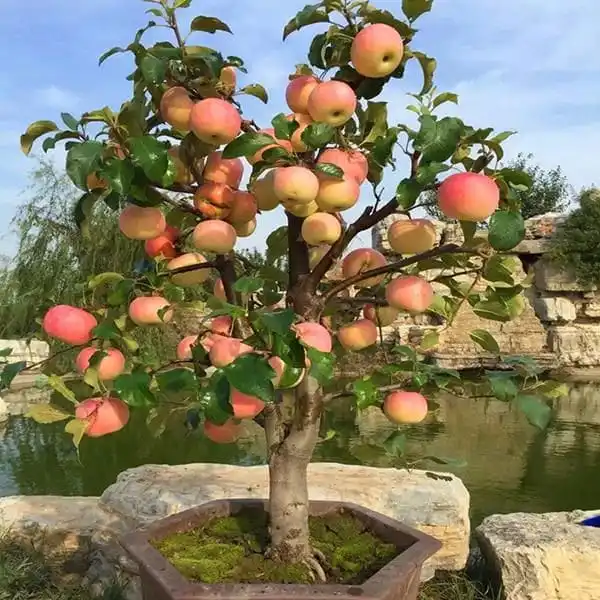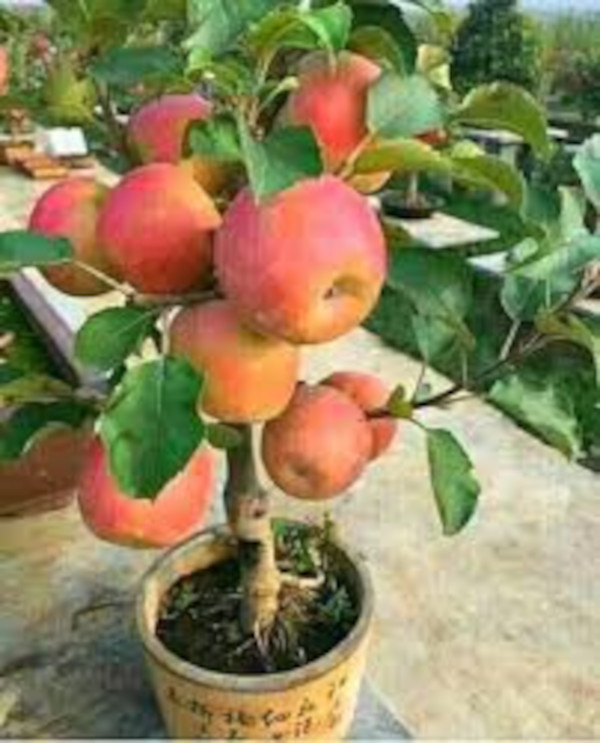I've seen once a post on social media about dwarfing plants a few years ago and occasionally I keep remembering it when I think of farming, food, and gardening, this would help solve many issues for humanity especially in providing food where the agriculture land is scarce.
Dwarfing Plants: Grow More in Less Space in Your Greenhouse

Dwarfing plants are a great option for gardeners who want to maximize their yield in a small space, especially in a greenhouse. Dwarfing plants are plants that have been bred to be smaller than their standard counterparts, but they can produce just as much fruit or vegetables.
Dwarfing plants are available in a wide variety of types, including tomatoes, peppers, eggplants, fruit trees, and ornamental plants. They are typically less expensive than standard plants, but they can save you money in the long run because they produce more fruit and vegetables per square foot. Dwarfing plants are also easier to care for than standard plants, as they require less pruning and watering.
Examples of dwarfing plants that can be grown in a greenhouse:
- Dwarf tomato plants: Dwarf tomato plants are a popular choice for greenhouses because they produce a high yield of fruit in a small space. Dwarf tomato plants typically grow to be 3-5 feet tall and can produce up to 100 pounds of fruit per plant.
- Dwarf pepper plants: Dwarf pepper plants are another good option for greenhouses. They are easy to care for and produce a high yield of peppers. Dwarf pepper plants typically grow to be 1-2 feet tall and can produce up to 50 peppers per plant.
Pros:
- Higher yield in smaller spaces
- Easier to care for
- More resistant to pests and diseases
- Earlier harvest
Cons:
- More expensive than standard plants
- May require more specialized care
Dwarfing plants are a great option for gardeners who want to maximize their yield in a small space, especially in a greenhouse. They are also easier to care for and more resistant to pests and diseases than standard plants. If you are considering growing dwarfing plants, be sure to choose the right variety for your climate and growing conditions.

Some additional tips for growing dwarfing plants in a greenhouse:
- Choose the right varieties. There are many different varieties of dwarfing plants available, so it is important to choose ones that are suited to your climate and growing conditions.
- Plant in full sun. Dwarfing plants need at least 6 hours of sunlight per day.
- Water regularly. Dwarfing plants need to be watered regularly, especially during hot weather.
- Fertilize regularly. Dwarfing plants need to be fertilized regularly to produce a high yield.
- Mulch around the plants. Mulching around the plants will help to keep the soil moist and suppress weeds.
With a little care and attention, you can enjoy a bountiful harvest from your dwarfing plants in your greenhouse.
Have you tried dwarfing plants? Do you think, like me, this would help in solving the global food issue better than eating bugs or synthetic food?
There is reasonable evidence that this article is machine-generated. Posting such content is considered fraud. Fraud is discouraged by the community and may result in the account being Blacklisted.
Guide: AI-Generated Content = Not Original Content
If you believe this comment is in error, please contact us in #appeals in Discord.